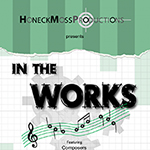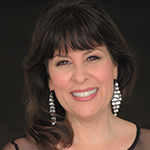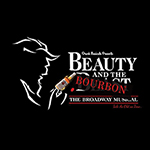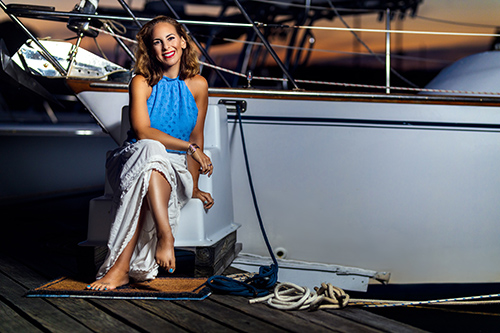
Photo: Matt Baker
When Cabaret Scenes magazine profiled Dawn Derow in our May/June 2018 issue, she was just a few months removed from winning a MAC Award (Manhattan Association of Cabarets) for “Best Female Vocalist” for her 2017 show My Ship: Songs from 1941 (her Director Jeff Harnar won a MAC that same year as “Best Director”). Now, more than three years later, the Zoho Music label is releasing on December 10 Derow’s studio CD version of My Ship, which she will be performing again as a CD release celebration show at The Green Room 42 on January 15, 2022 at 7 pm. In her Cabaret Scenes review, Alix Cohen observed that “. . . A great show has translated into a great debut recording . . . Derow’s My Ship: Songs From 1941 is a splendid listen.” (To read the entire review, go to https://cabaretscenes.org/2021/12/03/dawn-derow-my-ship-songs-from-1941-2/)
But then Dawn Derow has been on quite a roll since we profiled her in 2018. She staged a highly praised show in 2019 called The House That Built Me, one that this publication called “nearly flawless.” During the fall of 2020, she launched a show with Lauren Fox and Peter Calo called Backyard Troubadours: Performing the Music by the Artists That Made The Troubadour West Musical Shrine SHINE. During 2021, Derow performed all over the Cape Cod area, and during the early summer she launched her new Eydie Gorme Tribute Show at Birdland Theater to rave reviews.
When Cabaret Scenes contacted Ms. Derow for this interview, she was preparing to be the featured singer at Holiday on The Cape, the Symphony Orchestra Holiday Concerts in Cape Cod (where Derow grew up) in front of a 59-piece orchestra.
Cabaret Scenes You’ve performed cabaret shows in which you’ve sung opera, musical theater, folk, pop, and jazz. What is it about each vocal genre that you enjoy?
Dawn Derow I think the different genres feed different parts of my personality. There’s a rocker inside me; there’s a dancer, there’s a classy goddess; an athlete, and there is definitely a goofball! Opera is a vocal marathon, while musical theater can be fun, flirty, and yet also profound. Singing folk rock or singer-songwriter type of songs comes from an even deeper part of my soul, whether it’s a song I wrote or a song like Dar Williams’ “When I Was a Boy” which I sang in The House That Built Me. With jazz and especially with My Ship, it sometimes feels as if the intimacy of the show is like a page out of my personal journal—not only the history of the songs, but also the history of my family. Sometimes I think I am the reincarnation of my grandmother. All these genres include stories I want to tell through singing.
CS After starting your performing career as an opera singer, you eventually ended up transitioning to cabaret. What accounted for the change in genre?
DD About a year after I graduated from the Boston Conservatory and journeyed out to become an opera singer, I found it very difficult and expensive to always have five arias ready to go for an audition at any time. And they weren’t easy arias either. I realized that I just didn’t want to ONLY sing opera all the time. That said, what I do love about opera is singing some of the most gorgeous arias ever written for a soprano voice. Well, the high notes are fun as well.
CS And do you use those high notes in this album?
DD As a matter of fact, the last track on the album is “(They’ll be Blue Birds Over) The White Cliffs of Dover.” We placed it last because it almost feels like a bonus track. That was wise advice given to me by my producer Paul Rolnick when picking the song order.
CS If you could only perform one genre…
DD I don’t know that I could pick just one at this point. I’m 13 years into creating my own cabaret shows ranging from pop to opera, folk to musical theater, and now jazz. If I picked one, it would be like saying I have a favorite child. I can’t do that. At this moment, I have vocal favorites and certain songs I love to perform that never get old. Now I feel that all these genres are growing on me and fulfill different parts of my persona.
CS When looking at and deciding on new material what do you concentrate on, lyrics or music?
DD What pulls me in is a well-written song with a beautiful melody. That’s why so many of us sing Great American Songbook tunes because they are undeniably great songs. So, then I hook onto the lyric and if it resonates with me in that moment, I start pulling up the lyrics to follow along as I learn the music. When picking songs for a cabaret performance, and building that arc, there could be a gap in the story line that needs filling, or something that you want to “say in a song” at that time in your life. A ‘dramatic highlight,’ I call it. Then I search for that specific song. For example, “Just Squeeze Me” was added towards the end of the development of My Ship. We tagged it on the front of “I Got it Bad and That Ain’t Good” and it morphed into an entire mini-story in my head. At the time we put that together I was going through a rough break up and that became the ‘dramatic highlight’ that we needed in the set list.
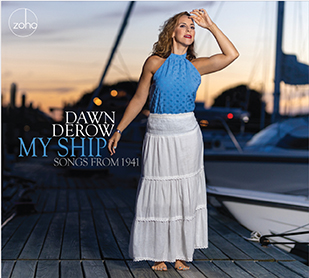
CD Design Jack Frisch
CS What is it about the songs from 1941 that spoke to you enough to build a show around that material?
DD A lot of people in the New York cabaret world may have already heard this story since it’s almost five years ago. In early 2017 I was obsessed with Anita O’Day’s version of “My Ship” off her 1975 album called My Ship which was from the year I was born. I find her voice haunting, flirty, and raw all at the same time. I had been working with the great music director Barry Levitt, building up my jazz standard repertoire and we started working on that song. Then I was asked to bring a show to the Cabaret Festival in Provincetown, MA that June with Barry at the helm. The theme for the P-Town CabaretFest that year was “A Sentimental Journey: The 1940s”. Well, My Ship was written in 1941 and we just started pulling up more songs from that year. Once Barry and I had a pretty good set list of songs we brought in Jeff Harnar to direct and it became a great collaboration. The through line of the show became what it was like to be a woman back in 1941.
CS How did you decide that this material would be the focus of your next recording?
DD Well, I knew I wanted to record again. My first album was a duo CD with Sean Harkness; a live recording at the old Metropolitan Room and we were nominated for a MAC Award. But once I realized that My Ship was a hit show and that I had created these “vintage-type” women within each song, I knew I had to preserve it. Plus, after bringing Ian Herman on as the new “captain of my ship,” and getting along so well with bassist Tom Hubbard and percussionist Daniel Glass, it was nothing but smooth sailing every time we performed together. So, I started a conversation with Paul Rolnick at the Mac Awards show in 2019, the year his wife Karen Mason—one of my idols and friends—was given a Lifetime Achievement Award. I stopped Paul in the crowd and told him that I wanted him to help me produce an album. I think I scared him at first, but now that we have worked so closely on this project, I think he has come to accept my strong willed and slightly blunt personality[laughs].
CS With so many well-known and classic songs from that era to choose from, how did you decide on the 14 on the CD?
DD The CD order is pretty much the same as the original My Ship show set list. For the CD we cut “When I See an Elephant Fly” from Disney’s Dumbo because in the show there’s a lot of dialogue in the middle of it and I don’t think it would have fit the way it does in the live show. So, instead, we added “Baby Mine” from Dumbo, which I usually do in the two-act version of the show. I also added a new song, “Why Don’t We Do This More Often?,” which I had sung in a Doris Day tribute show with Blake Allen and Doris Dear at The Green Room 42 in 2019.
CS Speaking of The Green Room 42, tell us about your show on January 15.
DD I’m really excited about doing a My Ship CD celebration show, especially for those who never saw it the first time around. My music director Ian Herman is back at the piano with Tom Hubbard on bass and Daniel Glass on drums, all of whom play on the album. For this show I’ll have two dancers who are in my upcoming music video for the Glenn Miller classic “Chattanooga Choo Choo.”
CS So many of these songs were made famous by iconic singers. How did you approach the arrangements to keep them fresh?
DD Besides Anita O’Day, the only other singer I listened to while putting this all together was Ann Hampton Callaway’s version of “Blues in the Night.” I really admire Ann and love her voice, and her musicianship is outstanding. I tried not to listen too much to Billie Holiday’s version of “Lover Man” [Oh Where Can You Be], or some of the other great versions of these songs that you might think of when you hear them. Some of the songs we flipped on their heads, like “Chattanooga Choo Choo,” which is now a come-hither, funky cat-call done from the point of view of a single gal objectifying a man she finds handsome or sexy.
CS How did it feel to transfer a live performance into an audio recording. Did you have to make any adjustments in your approach to the material?
DD We recorded at engineer David Stoller’s studio at the Samurai Hotel Studio in Astoria. I prepped the same as I would for a show even though I sang half the songs one day [Feb 20, 2020] and then due to the pandemic didn’t get to go back into the studio until September 29. I dressed the part, vocalized, did my hair and make-up, reviewed my notes, even wore my vintage period gloves.
Most of the songs we did in about three takes.
I’d say the hardest one for me to pull out was the last track, “White Cliffs of Dover,” because in the show there is the dramatic and emotional build up, not to mention the adrenaline the audience provides. We had to do that song four times. But as most people that work with me know, I don’t get vocally tired. Paul Rolnick calls me the “Energizer Bunny.” In between the third and fourth take I was lying on the floor doing abdominal exercises, squatting, lunging, you name it just to free my body and get out of my head about recording the “perfect take.” The rest was a lot of conversations with Paul and Ian Herman. Especially when we started layering on the horns and the strings which was very exciting.
To keep up with Dawn, please visit www.dawnderow.com


